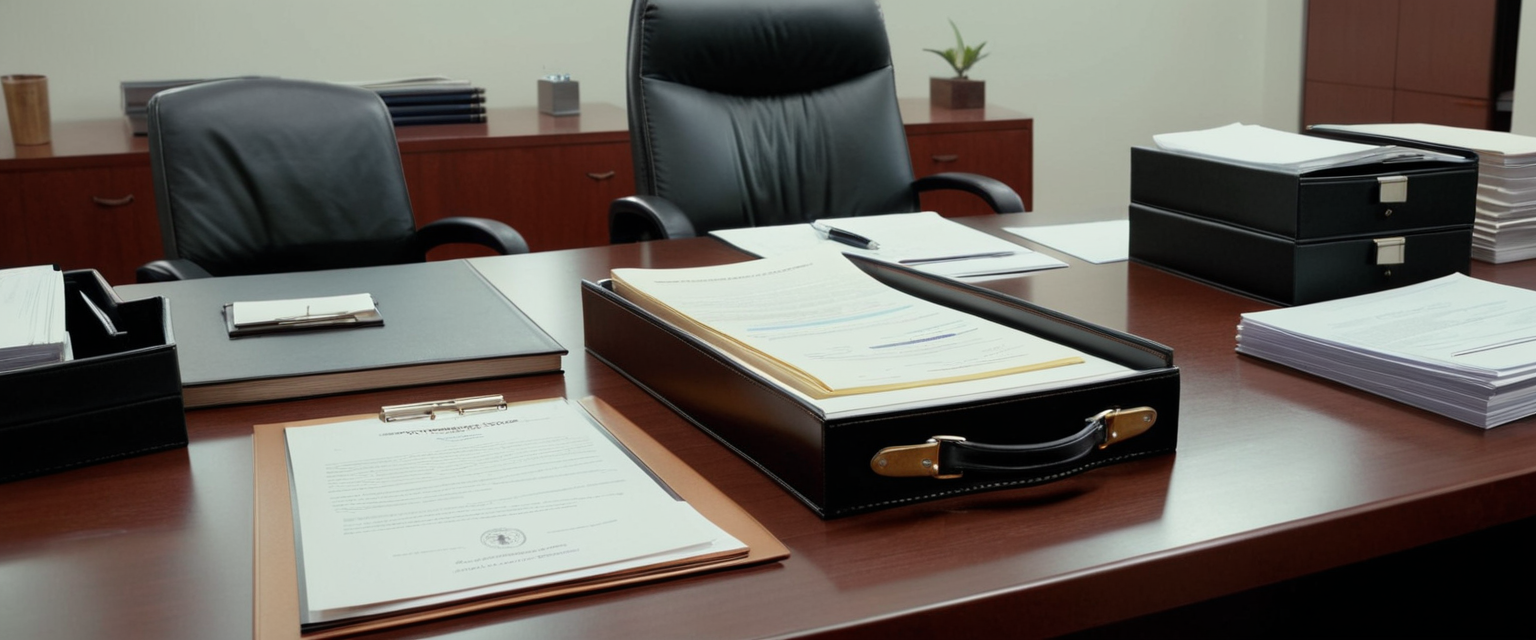
In an era characterized by unprecedented data exposure and identity theft risks, maintaining meticulous records of personal information security incidents has become not merely advisable but essential for individuals navigating the complex landscape of digital vulnerability. The practice of keeping a breach diary—a personal account documenting discovered breaches, exposure incidents, monitoring activities, and recovery steps—serves multiple critical functions that extend beyond simple record-keeping into realms of legal protection, psychological resilience, and strategic personal security management. This comprehensive analysis examines the multifaceted benefits and applications of breach diary maintenance within the broader context of proactive personal information monitoring and identity protection, drawing upon regulatory frameworks, psychological research, legal precedent, and contemporary best practices in incident response and documentation standards.
Understanding Breach Documentation in the Context of Personal Information Monitoring
The Definition and Scope of Breach Diary Maintenance
A breach diary represents a systematic personal record documenting all activities related to data breach discovery, monitoring, notification, and recovery efforts. Unlike general personal journals that may explore emotions and reflections, a breach diary functions as a formal documentation instrument specifically designed to capture factual, detailed information about security incidents affecting personal information. The diary serves as a personal chronicle of when breaches were discovered, what information was exposed, what notifications were received, what recovery steps were taken, and what communications occurred with affected organizations. This distinction is crucial because the breach diary operates simultaneously as a personal tool and as potential documentary evidence that may be required by regulatory authorities or useful in legal proceedings.
The scope of breach diary maintenance extends across the entire lifecycle of a breach incident, beginning at the moment of discovery and continuing through the lengthy recovery process that may span months or years. According to the Federal Trade Commission, the initial response to a breach discovery must include careful documentation of how the breach was identified, what systems were involved, and what immediate steps were taken. A comprehensive breach diary captures these details in real time, ensuring that crucial information is preserved before memory deterioration occurs, a phenomenon recognized in psychological research on critical incident reporting where individuals lose significant detail within hours of experiencing traumatic events.
The practical application of breach diaries has become increasingly relevant given the frequency and scale of contemporary data breaches. In 2025, organizations of all sizes continue to experience significant security incidents, with breaches exposing millions of personal records and affecting individuals across all demographic groups. Each breach represents a potential exposure of sensitive information including names, Social Security numbers, financial account information, medical records, and other personally identifiable information that criminals can weaponize for fraud, identity theft, and financial exploitation.
Integration with Proactive Monitoring Systems
Breach diaries function as personal components of comprehensive proactive monitoring strategies, complementing technological solutions such as dark web surveillance and credit monitoring services. Organizations providing breach monitoring services inform customers of exposed credentials weekly through automated reports, yet these automated systems cannot replace individual documentation of personal discovery efforts, manual investigations, or self-directed recovery activities. When an individual discovers through independent research or receives notification from a monitoring service that their information has been compromised, recording this discovery in a breach diary establishes a personal timeline that aligns with and supplements commercial monitoring services.
The relationship between breach diaries and identity theft protection services represents an important aspect of holistic personal security management. Identity theft protection services can detect potential abuse of personal data such as unauthorized loan applications and exposure of information on illicit lists or websites, and they provide alerts about these discoveries. However, the individual receiving these alerts must then document what they discovered, when they discovered it, what actions they took in response, and what outcomes resulted from those actions. This personal documentation layer transforms passive receipt of alerts into active personal information stewardship, creating a record that belongs to the individual rather than to a third-party service provider.
Legal and Regulatory Requirements Mandating Breach Record Maintenance
Statutory Obligations and Compliance Frameworks
The legal landscape governing data breach disclosure and record-keeping has evolved significantly, with multiple regulatory frameworks now explicitly requiring that individuals and organizations maintain detailed records of breach incidents. In Canada, the Personal Information Protection and Electronic Documents Act (PIPEDA) requires organizations to keep records of all breaches involving personal information, with these records to be provided to the Privacy Commissioner of Canada upon request. More recently, Quebec’s Law 25 similarly requires all private sector organizations to maintain a register of confidentiality incidents as of September 22, 2022, with both statutes indicating that these records must include all incidents regardless of whether notification thresholds are met.
The federal Breach of Security Safeguards Regulation provides explicit guidance on the temporal scope of breach record retention, requiring that organizations maintain breach records for a period of two years following the day on which the breach occurred. This two-year requirement establishes a baseline documentation standard that individuals seeking to participate effectively in breach response processes should consider adopting for their personal records. While this regulation technically applies to organizations, the principle underlying it—that breach information must be preserved for an extended period—reflects the understanding that breach investigations, regulatory inquiries, and recovery efforts often extend well beyond the immediate aftermath of a breach discovery.
The UK GDPR establishes comprehensive requirements for breach notification and documentation, mandating that organizations report certain personal data breaches to the relevant supervisory authority within 72 hours of becoming aware of the breach. While this requirement applies to organizations rather than individuals, the regulatory emphasis on rapid documentation and notification timeline demonstrates the critical importance of capturing information contemporaneously rather than relying on retrospective reconstruction. For individuals who receive breach notifications, contemporaneous documentation of when notifications were received and what information they contained serves as evidence of timely awareness, a factor that may bear on eligibility for certain remedies or compensatory measures.
Documentation as Evidence of Due Diligence and Compliance
Personal breach diaries establish documentary evidence of an individual’s due diligence efforts in responding to security incidents, evidence that may become relevant in multiple contexts including disputes with creditors, investigations into fraudulent accounts opened in one’s name, and potential civil litigation against breached organizations. The FTC’s guidance on data breach response for businesses explicitly addresses the importance of documentation, noting that records should describe how the breach happened, what information was taken, how thieves have used the information, what actions have been taken to remedy the situation, and what actions are being taken to protect individuals.
While this guidance technically addresses organizational documentation obligations, the same documentation principles apply to individuals maintaining breach diaries. When an individual documents the specific contents of a breach notification letter, the timeline of their own investigation, the steps they took to secure affected accounts, and the contacts they made with relevant institutions, they create a contemporaneous record that demonstrates responsible action. This documentation becomes particularly valuable if disputes arise regarding account liability or if the individual must demonstrate to a financial institution that fraudulent charges occurred as a result of a specific identified breach rather than through the individual’s own negligence.
Psychological and Cognitive Benefits of Maintaining Breach Documentation
Memory Enhancement and Incident Recall
Psychological research on memory consolidation and critical incident retention demonstrates that individuals experience substantial memory loss in the immediate aftermath of stressful events, a phenomenon termed critical incident amnesia. This research indicates that immediately after a traumatic event, individuals retain only a limited, “pure” memory of the most vivid details, often focusing on aspects that felt most personally threatening rather than maintaining comprehensive recall of the entire sequence of events. Within 72 hours and continuing over subsequent days, memory undergoes reconstruction as individuals integrate information from external sources including media reports, conversations with others, and official communications, but this reconstructed memory becomes contaminated with material the individual did not directly observe.
For individuals experiencing the stress and disruption associated with data breach discovery and identity theft, this memory degradation process creates a significant risk that critical details will be lost. The date and time when a breach notification was received, the specific email address or phone number through which notification occurred, the exact content of the notification message, the names and contact information of individuals spoken with at various organizations, and the specific actions taken in response all represent the type of detailed factual information that memory research suggests will be quickly forgotten if not recorded at the time of the event.
By maintaining a breach diary and recording these details in real time or within hours of an incident occurring, individuals leverage established best practices from psychological research on memory and incident reporting. Creating a written record serves as what psychologists term a memory cue, a stimulus that later allows retrieval of information that might otherwise be lost to memory decay. When an individual reviews notes about a conversation with a creditor several months after the conversation occurred, those notes provide a scaffolding structure that enables recall of context and details that would otherwise have been forgotten. This practical application of memory psychology has long been recognized in professional incident response contexts where trained responders are instructed to record details immediately rather than delaying documentation until later.
Emotional Processing and Psychological Resilience
Beyond its functions as a factual record, maintaining a breach diary provides psychological benefits through the process of structured emotional expression and cognitive processing related to security incidents. Journaling more broadly has been demonstrated to provide physical and mental health benefits, with research indicating that the act of writing about stressful events helps individuals process negative emotions and gain perspective on challenging situations. While breach documentation differs from therapeutic journaling in that its primary function is factual record-keeping rather than emotional expression, the process of recording breach-related events still provides opportunities for cognitive processing and perspective-taking.
The act of translating an abstract anxiety about data exposure into concrete documented facts—writing down specifically what information was exposed, how it was exposed, what the known risks are, and what actions are being taken—functions to externalize and thereby reduce the psychological impact of the threat. Rather than carrying the breach information as an abstract worry in one’s mind, the individual transforms it into a documented inventory that can be objectively reviewed and addressed through concrete action steps. This externalization process, which is central to the utility of journaling in recovery and wellness contexts, applies to breach management even though the primary purpose is factual documentation rather than therapeutic processing.
Furthermore, maintaining a breach diary provides tangible evidence of progress through recovery efforts, a psychologically significant outcome especially relevant given that identity theft victims report experiencing substantial stress and anxiety throughout the recovery process. By documenting actions taken—accounts secured, fraudulent charges disputed, credit bureaus contacted, identity theft reports filed—the individual creates a visible record of progress that counters the sense of helplessness that often accompanies identity theft. When an individual confronting multiple fraudulent accounts and extensive recovery work feels overwhelmed, reviewing the breach diary’s documentation of already-completed actions provides concrete evidence that progress is being made, a factor particularly important given research showing that identity theft victims experience significant emotional distress that can affect work performance and overall wellbeing.
Documentation Value in Personal Injury and Identity Theft Recovery Cases

Evidentiary Standards and Documentary Evidence in Legal Proceedings
The legal system recognizes specific categories of documentary evidence, with particular emphasis on records created during the course of business or personal activity rather than documents created retrospectively for litigation purposes. In personal injury litigation, pain journals documenting the immediate experience of injury—created by the injured party as the situation unfolded rather than constructed later for litigation—carry substantial evidentiary weight because they reflect contemporaneous observation rather than post-hoc reconstruction.
This principle translates directly to breach diaries maintained in the context of identity theft recovery. A breach diary created as events unfold, with entries recorded when breach notifications are received, when fraudulent activity is discovered, and when recovery steps are taken, constitutes documentary evidence of substantially greater evidentiary value than a reconstruction of these events created months later for use in litigation or dispute resolution. Courts recognize that contemporaneous records created without knowledge of pending litigation are more trustworthy than later reconstructions, as contemporaneous records are less likely to be shaped by litigation strategy or motivated reasoning about what information might prove beneficial in a dispute.
The Federal Rules of Evidence establish what is known as the business records exception to the hearsay rule, providing that records of regularly conducted activity are admissible as evidence if they meet specific criteria including that the records were made at or near the time of the events they describe and were made in the course of regularly conducted activity. While this exception formally applies to business records, the principles underlying it—that contemporaneous recording is more trustworthy than later reconstruction, and that records created in the normal course of activity rather than specifically for litigation are more reliable—apply equally to personal records maintained by individuals documenting their own security incidents and recovery efforts.
Application to Identity Theft Claims and Fraud Disputes
When an individual faces disputes regarding fraudulent accounts opened in their name or fraudulent charges on their accounts, a comprehensive breach diary establishing when they became aware of specific exposures, when they took protective actions, and what timeline of fraudulent activity occurred provides documentary evidence of substantial value. Financial institutions and credit card companies frequently dispute liability for fraudulent charges, particularly if they argue that the individual should have detected the fraud more quickly or if they contend that specific charges represent legitimate authorized activity.
A well-maintained breach diary addresses these disputes by establishing a clear timeline: the date when the individual first discovered that their information had been exposed, the date when they took action to secure affected accounts, the date when they first noticed fraudulent charges, and the precise sequence of actions they took in response. This timeline, created contemporaneously as events unfolded, provides objective evidence of when the individual became aware of the exposure and how quickly they responded. Such evidence becomes particularly valuable in disputes involving credit card companies or financial institutions, where the institution may claim that the individual should have detected fraud more quickly or failed to exercise reasonable care in monitoring accounts.
The Federal Trade Commission’s guidance on identity theft recovery explicitly instructs victims to maintain comprehensive documentation of all contacts made, including dates, names of representatives spoken with, phone numbers, and notes regarding what information was provided. By maintaining a breach diary that captures this information contemporaneously, individuals create the precise documentary record that the FTC recognizes as critical to effective recovery and that many creditors and collection agencies require when resolving identity theft disputes. Documentation that initially seems tedious—recording the date and time of a phone call, the name of the representative, what they said, and what action they promised to take—becomes invaluable when disputes arise months or years later about what communications occurred and what commitments were made.
Integration of Breach Diaries with Incident Response and Investigation Processes
Compatibility with Professional Incident Response Standards
The National Institute of Standards and Technology (NIST) publishes comprehensive guidance on computer security incident handling that emphasizes the critical importance of proper documentation throughout the incident response process. NIST guidelines specify that organizations responding to security incidents must document incident-related data, maintain clear procedures for collecting and analyzing information, and preserve forensic evidence that may be needed for investigation and potential legal proceedings. While NIST guidance technically addresses organizational incident response, the underlying principles regarding documentation and evidence preservation apply equally to individuals documenting their own personal security incidents.
One of the key principles established in professional incident response literature is that documentation must be created and preserved in a manner that maintains chain of custody—establishing that the records have not been altered or contaminated since their original creation. For individuals maintaining breach diaries, this principle translates into practical guidance: records should be stored securely, preferably in formats that make alteration obvious (such as printed versions with dates recorded or digital documents with metadata preserved), and should be protected from unauthorized access or modification. The FTC’s guidance on breach response emphasizes that documentation of breach notification must be preserved and made available to regulators, with particular attention to maintaining the integrity of records.
Incident response professionals also emphasize the importance of documenting not just what was discovered, but also when it was discovered, how it was discovered, and what actions were taken in response. A thorough breach diary follows this same principle, capturing not merely that a breach occurred but the specific timeline of discovery, the method through which the individual became aware of the breach, the communications that occurred, and the precise sequence of recovery actions. This comprehensive documentation creates what incident response professionals term a complete incident narrative—a detailed account of events that provides sufficient detail that another individual reviewing the diary could understand exactly what happened and what actions were taken.
Compatibility with Law Enforcement and Regulatory Investigations
When individuals become victims of identity theft or fraud resulting from a data breach, they are often instructed to file reports with law enforcement agencies and federal authorities. The FTC maintains the Consumer Sentinel Network, a secure database of consumer fraud complaints designed to be available to civil and criminal law enforcement agencies. When an individual files a complaint with the FTC regarding identity theft, they are providing information that enters law enforcement databases and may be used by law enforcement agencies to identify patterns of criminal activity, track particular criminals or criminal organizations, and coordinate investigations across jurisdictions.
A well-maintained breach diary provides the precise factual information that law enforcement agencies and regulatory investigators need to conduct effective investigations. Rather than attempting to reconstruct details from memory months after the fact, individuals who have contemporaneously documented breach incidents can provide law enforcement with detailed timelines, specific dates and times, names of organizations and representatives contacted, and documentation of fraudulent activity. This level of detail substantially enhances the investigative value of the complaint and increases the likelihood that law enforcement agencies can identify patterns suggesting coordinated criminal activity or serial perpetrators.
Furthermore, when regulatory agencies investigate whether organizations complied with applicable breach notification laws, they rely on documentation of what information was provided to individuals, when it was provided, and what the content of notifications specified. An individual’s breach diary documenting the dates of breach notifications received and the specific contents of those notifications provides valuable evidence that regulatory agencies can use when evaluating organizational compliance with applicable legal requirements.
Best Practices for Maintaining Effective Breach Diaries
Structural and Content Guidelines
Effective breach diaries should be organized to facilitate easy review and reference, with clear dating of all entries and logical organization of information by breach incident rather than by chronological date if multiple breaches are being tracked. For each breach or security incident, the diary should document the following categories of information: the date and method through which the incident was discovered, the specific organizations or services involved in the breach, the types of information exposed (such as name, address, Social Security number, financial account information, etc.), all breach notifications received with dates those notifications were received, and the specific contents of those notifications including what information was exposed and what the organization recommends affected individuals do in response.
The diary should further document all recovery actions taken, including dates and times of calls to organizations, names and titles of representatives spoken with, contents of conversations, promises or commitments made by representatives, follow-up actions recommended, and outcomes achieved. For disputes with financial institutions or identity theft incidents, the diary should document fraudulent charges or accounts discovered, the dates they were first noticed, actions taken to dispute or close them, and the outcomes of those actions including confirmation that charges were removed or accounts closed.
Documentation should be specific rather than general, with preference for exact dates and times rather than approximate timeframes such as “sometime in March” or “a week later.” When phone conversations occur, the individual should record the date and time of the call, the specific phone number called, the organization or department reached, the name and title of the representative spoken with, a brief summary of what was discussed, what action the representative indicated would be taken, and follow-up actions the individual promised to undertake. This level of specificity creates a record that, if needed, can be reviewed by third parties such as financial institutions, law enforcement, or regulatory agencies and provides sufficient detail that they can understand exactly what occurred and what communications took place.
Record Preservation and Confidentiality Considerations
Breach diaries contain highly sensitive personal information including Social Security numbers, financial account information, and detailed descriptions of security vulnerabilities affecting the individual. Accordingly, storage and preservation of the diary must employ security practices consistent with those used for other highly sensitive personal documents. The diary should be stored in a location where it cannot be accessed by unauthorized individuals who might gain access to the documented sensitive information for purposes of further fraud or identity theft.
Physical copies of the diary, if maintained, should be stored in a secure location such as a locked safe or safe deposit box, recognizing that an individual’s residence may be subject to theft or that family members with access to the home might inadvertently expose sensitive information. Digital copies of the diary should be encrypted and backed up in a manner that maintains security, such as through encrypted cloud storage services that require multi-factor authentication for access. The individual maintaining the diary should avoid storing it on public computers or unsecured cloud services where the information might be accessible to unauthorized parties.
Importantly, while the diary should be comprehensive and factual, it should not contain speculation about perpetrators, accusations regarding specific organizations without supporting evidence, or emotional venting that might undermine the diary’s credibility if it is later reviewed by third parties. The purpose of the diary is to create an objective record of facts, and maintaining this objective tone—recording what was discovered, when it was discovered, what actions were taken, and what outcomes resulted—ensures that the diary retains maximum credibility and utility regardless of whether it is eventually needed in a dispute resolution or investigative context.
Case Studies and Real-World Applications
Application in Personal Injury-Type Identity Theft Cases
Consider the scenario of an individual who discovers that their personal information has been exposed in a data breach affecting a financial services company. In this scenario, the individual receives notification from the company, discovers months later that fraudulent accounts have been opened in their name by criminals who obtained their information through the breach, and subsequently disputes with a credit card company regarding liability for the fraudulent charges. In this context, a well-maintained breach diary becomes invaluable.
The diary establishes the exact date when the individual first became aware of the breach through receipt of the company’s notification, demonstrates that the individual took immediate action to protect their account by changing passwords and placing fraud alerts on their credit report, documents the specific date when fraudulent activity was first discovered, and records all communications with the financial services company and credit card company regarding fraud investigation and account closure. When the credit card company argues that the individual should have detected fraud faster or failed to exercise reasonable care in monitoring accounts, the breach diary provides contemporaneous documentary evidence establishing the timeline of discovery and the rapid response undertaken by the individual. This evidence, created at the time events occurred rather than reconstructed for litigation, carries substantial weight in disputes regarding account liability.

Application in Regulatory Compliance and Investigation Contexts
Consider further the scenario of a regulatory investigation into whether a breached organization complied with applicable breach notification laws. In many jurisdictions, breach notification laws require that affected individuals be notified within specific timeframes and that notifications include certain mandatory information. An individual’s breach diary documenting the date and time that notification was received, the specific content of the notification, and what information was included in the notification provides regulatory investigators with objective evidence they can use to verify whether the organization complied with applicable notification requirements. Rather than relying on the organization’s own records regarding what it sent and when it sent notifications, regulators can reference individual victims’ documentation of what they received and when they received it, creating an independent verification of organizational compliance or non-compliance.
Similarly, if an individual becomes involved in civil litigation against a breached organization—such as class action litigation seeking compensation for victims—a comprehensive breach diary establishes the individual’s proof of impact. Rather than attempting to recall months or years later whether specific fraudulent charges resulted from a particular identified breach, or attempting to reconstruct what recovery actions were undertaken and how long they required, the individual can reference contemporaneous documentation recorded in the breach diary as the situation unfolded. This evidence of impact—documenting specific fraudulent accounts, the time required to resolve them, the emotional distress experienced, and the financial losses incurred—becomes substantially more persuasive to a court or arbitrator when supported by contemporaneous documentation created without knowledge of pending litigation.
Application in Tax Identity Theft and Government Benefits Fraud Cases
A specific application of breach diary maintenance involves tax identity theft, where criminals use stolen personal information to file fraudulent tax returns with the Internal Revenue Service. The IRS maintains an Identity Theft Victim Assistance program that helps victims resolve fraudulent tax returns and recover stolen refunds, but the process requires comprehensive documentation of when the individual became aware of the tax fraud, what steps they took to resolve it, and what identity theft protections they had in place.
An individual maintaining a breach diary that documented exposure of their Social Security number and tax-related personal information through a breach, who can subsequently point to this diary to establish that they became aware of the potential tax fraud risk and took protective action, demonstrates the foresight and due diligence that the IRS recognizes as relevant in resolving tax identity theft cases. The diary becomes evidence that the individual was monitoring their information proactively, was aware of specific exposure of tax-related information, and took steps to protect themselves from exactly the type of fraud that subsequently occurred. While this documentation does not prevent tax fraud, it establishes the individual’s diligent efforts to prevent it and supports more favorable resolution of the identity theft case by the IRS.
Challenges and Limitations of Breach Diary Maintenance
Practical Barriers and Time Constraints
While breach diary maintenance provides substantial benefits, practical challenges often impede individuals from creating and maintaining comprehensive documentation. The very trauma and stress associated with discovering identity theft or receiving breach notifications can diminish the individual’s motivation to undertake meticulous documentation at the moment when documentation would be most valuable. An individual confronted with the urgent need to secure compromised accounts, contact financial institutions, place fraud alerts on credit reports, and pursue identity theft claims may understandably prioritize these action steps over the apparently secondary task of documenting what they are doing.
Further, the documentation burden involved in maintaining a comprehensive breach diary is non-trivial, particularly for individuals managing multiple breaches or extensive fraudulent activity. The FTC explicitly instructs identity theft victims to write down who they contacted and when, to document what each representative said and what actions were promised, and to maintain copies of correspondence with all organizations involved. For an individual managing accounts at multiple financial institutions, dealing with multiple identity theft incidents, and engaging in extensive recovery efforts, the documentation burden can be substantial and may seem to divert time and attention from more urgent actions needed to protect the individual’s financial interests.
Additionally, individuals often lack specific guidance regarding what information should be included in breach diaries and how to organize documentation effectively. While the FTC and other agencies provide some guidance on maintaining records during identity theft recovery, this guidance is often general rather than providing specific templates or formats that individuals can follow. Some individuals may feel uncertain about whether their documentation efforts are adequate or whether they are capturing the right information in the right manner.
Limitations of Personal Documentation as Forensic Evidence
While breach diaries provide substantial documentary value, they remain personal records created by individuals rather than records created by forensic investigators or authoritative institutional sources. If a breach diary is introduced into litigation or investigative proceedings, opposing parties or skeptics may raise questions about whether the records have been altered since their original creation, whether the individual’s recollection at the time of recording was accurate, or whether the individual was subjective in their characterization of events. These evidentiary challenges do not invalidate breach diaries as evidence—courts regularly admit personal records as evidence despite these potential limitations—but they do represent limitations on the evidentiary value of personal documentation compared to official records from institutions or forensic investigations.
Furthermore, breach diaries are limited to information that the individual personally observed or learned about through communications with others. An individual’s diary cannot document the perpetrator’s identity, the methods used to compromise security systems, or the precise details of how criminals obtained the information, as these details typically remain known only to the perpetrator or discovered through law enforcement investigation. The diary is valuable precisely because it documents what the victim experienced—the discovery of exposure, the recovery process, the impacts experienced—but it cannot substitute for professional forensic investigation that may reveal details about how the breach occurred and who was responsible.
Information Overload and Documentation Fatigue
Individuals managing complex identity theft situations may face a challenge of documentation overload, where the sheer volume of information to document leads to incomplete or disorganized records that fail to serve their intended purpose. An individual discovering fraudulent accounts at multiple financial institutions, facing recovery efforts spanning multiple months or years, and receiving repeated breach notifications from various organizations may struggle to organize all this information into a coherent diary that can be easily reviewed and referenced later. Documentation that is incomplete, disorganized, or difficult to navigate fails to serve its primary purpose of preserving information for later reference and use.
The challenge of documentation fatigue reflects a broader challenge in information security and incident response: that comprehensive documentation requires sustained effort and attention over extended periods, effort that is easily neglected when the immediate crisis passes and the individual is tempted to move on to other concerns. An individual who maintains detailed breach diary entries during the acute crisis phase of identity theft recovery may neglect to continue documentation as the recovery process extends into subsequent months or years, resulting in a diary that is complete regarding initial responses but incomplete regarding eventual outcomes and resolution.
Broader Implications for Personal Information Security and Accountability Culture
Documentation as Individual Empowerment in Data Privacy Landscape
The practice of maintaining breach diaries represents a form of individual empowerment within a data privacy landscape where most personal information is collected, stored, and potentially exposed by institutions over which individuals have limited direct control. Regulatory frameworks such as the GDPR emphasize individual accountability rights and the ability of individuals to track and document what data has been processed and whether organizations are complying with privacy obligations. While these regulations primarily impose obligations on organizations rather than on individuals, the underlying principle—that documentation and record-keeping enhance accountability—applies equally to individual efforts to document personal security incidents.
By maintaining breach diaries and documenting their own efforts to respond to security incidents, individuals transform themselves from passive victims of institutional data practices into active participants in accountability processes. Rather than simply receiving breach notifications from organizations and hoping that those organizations have handled incidents appropriately, individuals who maintain breach diaries are actively monitoring their information, tracking exposure incidents, and creating independent records that can be used to hold organizations and perpetrators accountable. This shift from passive victimhood to active documentation creates what scholars and practitioners recognize as a culture of accountability, where the documented record demonstrates that both organizations and individuals are taking security seriously.
Documentation Standards and Evolving Regulatory Landscape
As regulatory frameworks governing data protection and breach response continue to evolve, personal documentation standards are likely to become increasingly relevant. Recent regulatory developments including the UK’s Data Use and Access Act, which changed breach notification timeframes from 24 hours to 72 hours following discovery, suggest that regulators are intensely focused on establishing clear documentary records of when breaches occurred and when they were reported. Individuals who maintain clear personal records of when they were notified and what the notification specified are positioned to verify regulatory compliance and contribute to accountability processes.
Furthermore, as more jurisdictions establish data breach compensation frameworks—such as California’s California Consumer Privacy Act (CCPA), which provides for statutory damages of $100 to $750 per person per incident, and European frameworks providing up to €1,000 in compensation—comprehensive personal documentation becomes increasingly valuable for establishing eligibility for compensation. Compensation regimes inherently require verification that a breach occurred, that affected individuals’ personal information was exposed, and that the individual has suffered from that exposure. A well-maintained breach diary documenting when exposure was discovered, what information was exposed, and what recovery efforts were undertaken provides precisely the documentary evidence that compensation schemes require for verification and payment.
The Final Entry: Your Breach Diary’s Lasting Impact
The practice of maintaining a breach diary represents an essential component of proactive personal information monitoring and identity protection, serving functions that extend far beyond simple record-keeping into realms of legal protection, psychological resilience, and personal accountability for security. In a digital landscape where data breaches have become ubiquitous and identity theft remains a persistent threat affecting millions of individuals annually, the ability to document and track personal security incidents has become a critical survival skill that individuals must develop and employ.
The benefits of breach diary maintenance are multifaceted and well-supported by evidence across multiple domains. From a psychological perspective, maintaining contemporaneous documentation leverages established principles of memory psychology and incident response best practices, preserving crucial details that would otherwise be lost to memory decay while simultaneously providing the emotional benefit of externalizing abstract anxieties into concrete documented action steps. From a legal perspective, breach diaries create the type of contemporaneous documentary evidence that courts recognize as highly credible and probative, evidence that may prove invaluable in disputes regarding account liability, fraudulent charges, or recovery from identity theft. From a regulatory perspective, breach diaries contribute to broader accountability cultures and provide independent verification of organizational compliance with breach notification and data protection requirements.
The integration of breach diaries with technological identity protection services creates a comprehensive personal information monitoring strategy where technology provides automated detection and alerting while personal documentation captures individual effort, discovery processes, and recovery outcomes. Neither technological monitoring alone nor documentation alone provides complete protection or recovery; instead, the two approaches complement each other to create robust personal information stewardship. Automated monitoring services catch exposures that the individual might miss, while personal documentation ensures that even automated alerts are translated into documented actions and tracked through resolution.
The challenges associated with breach diary maintenance should not be minimized—documentation fatigue, the difficulty of maintaining comprehensive records over extended time periods, and the psychological barriers to documenting traumatic security incidents all represent genuine obstacles to effective practice. Yet the increasing sophistication of cybercriminals, the growing frequency and scale of breaches, and the expanding regulatory frameworks governing data protection all suggest that the practice of maintaining breach documentation will become increasingly important and potentially increasingly mandatory.
Individuals seeking to protect themselves in the contemporary data security landscape are well-advised to establish personal documentation practices that capture breach discovery, notifications received, recovery actions taken, and outcomes achieved. By doing so, they transform themselves from passive victims of institutional data practices into active stewards of their own personal information security, create documentary evidence that may prove crucial in disputes or investigations, and contribute to broader accountability cultures where organizations recognize that individuals are monitoring their information and will document institutional responses to security incidents. The breach diary represents not merely a personal record but a tool of individual empowerment in an era of ubiquitous data exposure and persistent identity theft threats.
Protect Your Digital Life with Activate Security
Get 14 powerful security tools in one comprehensive suite. VPN, antivirus, password manager, dark web monitoring, and more.
Get Protected Now





